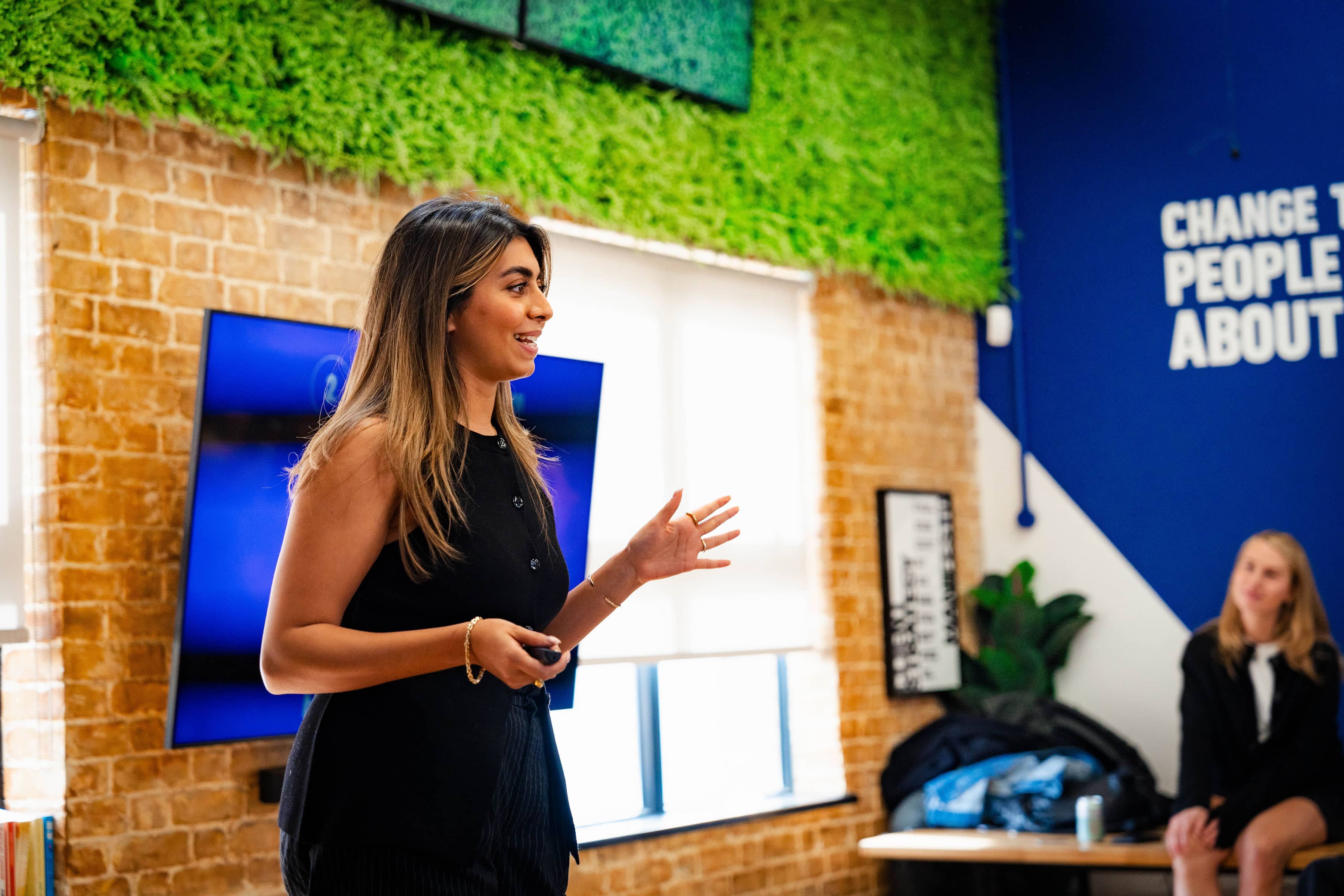Beyond the numbers:
83% of Gen Z say that a company’s commitment to diversity is an important factor in deciding where to work. But what does ‘commitment’ entail? The level of commitment shown by different organisations towards diversity in early careers doesn’t vary as much in magnitude as it does in scope.
For many, diversity is purely an instrument of recruitment - how can our team ensure that the number of hires we make at the end of the cycle is as diverse in representation as possible? Whilst this is certainly the link in the chain within which diversity goals are hit and missed, a successful strategy considers implications from further afield.
A holistic approach to early careers recruitment that ensures diversity is woven into every stage—from Brand to Attraction, Recruitment, and Development. Let’s break it down.
B is for Brand:
First Contact
Your brand is your handshake with the world, and in the context of diversity, it’s the first sign of your commitment—or lack thereof. Before candidates even consider applying, they’re evaluating your company based on how it presents itself. Does your brand message reflect inclusivity? Are diverse voices and stories highlighted in your content?
A strong, inclusive brand doesn’t just attract diverse talent; it signals that diversity is valued at the core of your company culture.
This is crucial because young professionals today—especially those from underrepresented backgrounds—are looking for workplaces where they can see themselves reflected and know they will be supported. Companies serious about diversity must invest in a brand that speaks directly to these aspirations.
A is for Attraction:
Reaching Out to the Right Talent
Once you’ve nailed your brand, the next step is to activate it effectively and attract the right talent. This means meeting students where they reside — on social media and on-campus. But, if diversity is your aim, it’s not just about getting in front of as many candidates as possible; it’s about reaching out in ways that resonate with diverse groups.
Are your campus events and social media campaigns inclusive? Do they show that your company values diversity not just in words, but in action? For example, partnering with diverse student organisations or hosting events that focus on inclusion can significantly boost your appeal. However, the cornerstone of diversity-focused attraction is the use of campus ambassadors. With ‘friends’ now being the number one source of careers advice for students, peer-to-peer promotion has never been a more effective tool. In this context, ambassadors can be selected based upon the diversity of their respective networks in order to maximise their impact on your goals.
Attraction is about more than casting a wide net; it’s about ensuring your net is welcoming to all, particularly those from historically underrepresented groups.
R is for Recruitment:
Making It Fair and Inclusive
You’ve built a strong brand and attracted a diverse pool of candidates. But does your recruitment process set you up for success in hiring the best of them? This stage is where biases—conscious or unconscious—can easily creep in, potentially derailing the efforts you’ve gone to to ensure your pipeline is reflective of your diversity ambitions.
Crafting a fair and inclusive recruitment process is vital. This means rethinking everything from job descriptions (are they inclusive and free of gendered language?) to the interview process (are disadvantaged candidates given a fair chance to showcase their skills?). Implementing anonymous recruitment techniques, ensuring varied hiring panels, and assessing for potential over experience can help mitigate bias.
This also reduces the likelihood of top performers reneging, since 83% of candidates say a negative recruitment experience could change their mind about a company that they had initially liked, with 87% stating that a positive experience could make them more likely to accept a job offer.
D is for Development:
The Journey Doesn’t End at Hire
You’ve made the hire—congratulations! But if you think your job is done, think again.
Diversity doesn’t end at recruitment; it continues into how you develop and nurture your talent.
What happens after those graduates and apprentices walk through your doors? Are they supported in ways that consider their diverse backgrounds? Do they have access to mentors, resources, and opportunities that will help them thrive?
An inclusive development program recognises that different people need different kinds of support. This could mean offering mentorship programs that match diverse employees with leaders who can guide them, or providing training that acknowledges and embraces different learning styles. Development is about ensuring that your diverse hires don’t just survive—they thrive, grow, and eventually lead within your company.

Why BARD matters:
When it comes to diversity in early careers recruitment, focusing on one aspect isn’t enough. Brand, Attraction, Recruitment, and Development are all interconnected pieces of the puzzle. Neglecting even one can undermine your entire diversity strategy. Think about it: you can have the most inclusive brand, but if your recruitment process is biased, you’ll lose out on the very talent you want to attract. Similarly, you might hire a diverse cohort, but without an inclusive development program, you risk high turnover and disengagement.
Incorporating BARD into your early careers recruitment strategy ensures that diversity is not just a box you tick at the recruitment stage, but a thread that runs through the entire journey of your employees. It’s about creating a company where diverse talent can see themselves, join, grow, and eventually lead. And in today’s competitive landscape, that’s not just a nice-to-have—it’s essential.
By taking a holistic approach, companies can not only meet their diversity goals but also build a stronger, more innovative workforce. So, the next time you think about diversity in early careers, remember BARD—it’s your roadmap to success.




